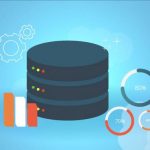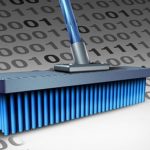An Excel sheet is enough to maintain records and various operations when a small company is commenced initially. However, as the company grows, merely an Excel sheet isn’t enough to work on huge databases. Managing a huge database and unraveling all its potential is surely difficult unless you understand why is data cleaning important, also termed data enrichment.
We have dedicated this page completely to data cleaning and various aspects related to it for a brief explanation of what is data cleaning, and its importance in data management.
Definition of Data Cleaning and How Data Cleaning Improves Machine Learning Results
Before we proceed further, let’s first define data cleaning. Simply, data cleaning is an important process and part of Machine Learning that involves recognizing and eliminating corrupted, incorrect, duplicate, incorrectly formatted, and incomplete data from the database. Some businesses also know this process as data cleansing. But what is data cleansing? Is it the same as data cleaning? No doubt, they are similar, but there is a minor difference between data cleaning and data cleansing that makes them slightly different from each other.
As the data is collected from various sources, the chances of the data being mislabeled, duplicated, or incorrect are high. If the database isn’t accurate, the algorithms and outcomes would also be unreliable leading to unprofitable analysis and results. Data cleaning helps improve the accuracy of the database for the overall development and function of the business.
Understanding the Importance of Data Cleaning:
Why is it important for data scientists to clean data? Data cleaning is an important part of the data analysis process. When the process is carried out correctly, it ensures the completeness, consistency, and accuracy of the database. Here are some key points that explain the importance of data cleaning.
- Cleaning the data eliminates inconsistencies, inaccuracies, and errors from the data giving you a reliable and accurate database.
- When the database is accurate and reliable, it helps businesses and analysts make improved decisions with clear insights
- The process eliminates incorrect data, duplicate records, misspelled details, etc., and gives a standardized database that is easy to use.
- It eliminates the need to prepare and clean the database saves the time and efforts of businesses and helps the data scientists and analysts to analyze the data.
- When data is collected from multiple sources, data cleaning helps to ensure the consistency and accuracy of data.
Key Benefits of the Data Cleaning Process for Businesses:
By now, we know that the data cleaning process eliminates any kind of errors in the data to make it clean, trustworthy, and accurate for various insights. Here are the various benefits of the data cleaning process.
Keeps The Data Organized
Businesses collect data like addresses, contact details, etc. from various sources. When the data is cleaned regularly, it keeps the data up-to-date and tidy. It keeps the data organized and stored securely and effectively.
Zero Mistakes
Having raw data with errors and mistakes isn’t only problematic for the analytics, but it also hurts the overall business operations. If the data is clean and well organized, members can have quick access to accurate and helpful information.
Enhanced Productivity
When the data is cleaned and updated regularly, it eliminates any unwanted or misleading data. This saves the time and effort of the teams who can focus on other tasks rather than looking through documents or databases. This improves the overall productivity of the business.
Saves You Money
Making decisions with rogue data might result in expensive mistakes. Regularly updating the database helps in detecting any glitches and allows you to correct them before they become a time and money-consuming error.
Today, businesses are looking to improve their internal data structures. They hire analysts who create new applications and data models that aid easy and improved mapping of sensible procedures. Hence, it can be concluded that having clean data enhances the overall development of businesses.
What is The Process of Data Cleaning?
Businesses use various advanced techniques to clean the data effectively. Yet, here are some steps that would help you learn what does it mean to clean data.
Eliminate Irrelevant or Duplicate Entries
The first step is eliminating any unwanted, irrelevant, or duplicate entries from the dataset. The chances of duplicate entries are high while collecting the data from multiple sources. Similarly, irrelevant entries might also distract you from your targets. Hence, removing unwanted, duplicate, or irrelevant entries from the dataset is important to make it performant and manageable.
Work on Structural Errors
Have you observed incorrect capitalization, typos, naming pacts, etc. in your database at the time of transferring or measuring the data? This is nothing but unstructured errors. Such entries can result in mislabeled classes or categories. Hence, the next step is to work on such structural errors and analyze them accordingly.
Remove Unwanted Outliers
Many times, certain unique entries appear to be flabby for the data that is analyzed. This might affect the performance of the database negatively. Hence, it is advised to remove such unwanted outliers to enhance the performance of the data. Again, it should also be noted that sometimes, the data might appear to be unwanted, but it would be important. So, study the outlier, and if it is irrelevant, it is good to remove it.
Deal with Missing Data
The process of how to clean data also includes working on missing data. Missing data can’t be ignored as certain algorithms might reject missing values. But you can handle such data in various ways. You can either remove the missing data, replace the missing value after analyzing it with other data sources, or alter the method of using the data. Select the right method and consider missing data to improve the accuracy of the data.
Data Validation
The final step of the data cleaning process is to validate the database. Is the data functional? Is the database created following rules and regulations strictly? Does the database help you with any insight? Does the database help you with trends to create a new theory? Are there any quality issues with the database? Answer all these questions. False conclusions are the result of dirty or incorrect data and result in poor decision and strategy-making. If you have any still errors, fix them and proceed again. So, validate the data to have an accurate database at the end.
What Kind of Data Tools Can Be Helpful?
Now that you know what is clean data and how it can be obtained, it is time to determine what tools can be helpful. It depends on the factors of the data you are working on and the systems used. Here is a list of certain standard tools that can be helpful.
Microsoft Excel
MS Excel has been the best, most popular, and staple data tool among others. The application has several built-in functions that automate the cleaning process by combining data from different cells, shaping rows and columns, and replacing text and numbers. Excel makes data cleaning an easier task, particularly for new data analysts. With the help of scripts and other pre-existing functions, Excel helps with a hassle-free cleaning process for businesses.
Programming Languages
Tools in this category use programming languages like SQL, Ruby, Python, etc. for real coding of both complex and versatile databases. With advanced programming languages, the expert data analysts code the scripts even from scrape, various ready-to-use libraries can also be used. Python consists of several data-cleaning libraries that elevate the cleaning process like NumPy and Pandas.
Visualizations
Data visualization is an ideal way of identifying errors in the database. With the help of the bar plot, visualizing different values aids in spotting a particular category that is already labeled in multiple ways. Likewise, scatter graphs aid in spotting outliers so that investigating them in detail becomes possible, and if needed eliminating them as well.
Proprietary software
Many businesses are now hiring data analytics to design proprietary software for data cleaning purposes. They are designed with a concept to make data cleaning a forthright task that even nonprofessional users can use effortlessly. There are many paid proprietary software available out there, however, some free proprietary software popularly used include Trifacta and OpenRefine.
Enhance Your Business Decisions with Expert Data Cleansing Services
In today’s cutthroat competition, making data-driven informed decisions is very essential and for this, businesses need the right type and quality of data. The poor database is surely frustrating and companies end up with bad decisions and time waste using it. Manually fixing all these mistakes isn’t possible, especially when the data keeps accumulating daily.
Are you also stuck with bundles of dirty, incorrect, or raw databases? DataPlusValue, a leading data cleansing company in India, is here for your help. We offer user-friendly solutions with strong data domination features and advanced tools that make cleaning and maintaining reliable data uncomplicated.
With us, you can set data validation procedures as per your criteria, review the database for irregularities, create alerts for quality issues of the database, add context to the data, ensure consistency and accuracy of the database, learn about data consumption, keep a watch on taxonomy changes, and much more.
So, get in touch for our data cleansing services today and give your business a trusted data foundation.














